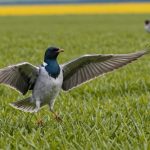Historical Context of UK Agricultural Subsidies
The journey of UK agricultural subsidies is deeply intertwined with the nation’s economic and environmental landscapes. Initially, subsidies aimed to boost food production post-World War II, resulting in an intensification of agricultural practices. While this increased productivity, it inadvertently affected farmland biodiversity.
Over the decades, there have been significant shifts in subsidy policies, transitioning from purely production-focused to more environmentally conscious approaches. The early subsidies often overlooked the ecological impacts, leading to habitat loss and a decline in various wildlife populations.
Avez-vous vu cela : Exploring UK”s Efforts to Safeguard Ancient Trees: Current Initiatives and Conservation Strategies
Historical trends in farmland biodiversity highlight a stark decrease during periods of intensive farming. However, as awareness grew, conservation efforts began to evolve alongside traditional agricultural practices. Programs like the Countryside Stewardship Scheme were introduced to incentivize farmers to adopt practices benefiting biodiversity.
The evolution of these efforts marks a critical turning point in balancing productivity with environmental preservation. Today, subsidies not only support farmers financially but also encourage practices that promote biodiversity. By understanding the historical impact of these policies, it becomes clear how past decisions have shaped the contemporary landscape, paving the way for more sustainable agriculture in the UK. This historical evolution underscores the ongoing need for integrated and adaptive subsidy policies.
A lire également : How UK Botanical Gardens Champion the Conservation of Endangered Plant Species
Current Trends in Farmland Bird Populations
Recent studies highlight concerning changes in current bird populations within farmland ecosystems. A statistical analysis reveals a marked biodiversity decline among species traditionally inhabiting these areas. This shift is attributable to multiple factors, primarily intensified agricultural practices and habitat loss.
Over the past few decades, farmland ecology has undergone significant transformations. Modern agricultural techniques, while enhancing productivity, have inadvertently disrupted the natural habitat of numerous bird species. Practices such as monocropping and the extensive use of pesticides diminish food sources and nesting areas, critically affecting bird populations.
Furthermore, climate change exacerbates this situation. Altered weather patterns and seasonal shifts influence migratory behaviours and breeding success, further contributing to the decline. These changes in farmland ecology necessitate urgent conservation efforts to restore and maintain biodiversity.
When comparing trends over recent decades, the decline becomes more apparent. Data from the last 30 years show a consistent reduction in species diversity and population numbers. Particularly vulnerable are those species with specialised habitat requirements or limited ranges, who struggle to adapt to rapid environmental changes.
Overall, understanding the current bird populations in farmland areas is essential not only for ecological balance but also for the broader implications on food security and agricultural sustainability. This situation urges a reconsideration of current farming practices to support a healthier ecosystem balance.
Impact of Subsidies on Farmland Biodiversity
Subsidies can have a profound impact on biodiversity, often contributing to biodiversity loss on farmlands. By providing financial incentives for practices that prioritise productivity over ecological health, certain subsidies inadvertently harm habitats and species. For example, subsidies supporting monoculture farming lead to reduced habitat variation, crucial for maintaining diverse ecosystems.
Examining specific subsidies uncovers these ecological consequences. For instance, subsidies encouraging intensive farming techniques can lead to habitat destruction, pesticide overuse, and soil degradation. These practices not only contribute to biodiversity loss but also disrupt ecological balance, affecting pollinators and natural pest control.
Various case studies highlight these impacts. In regions with high subsidy levels, like parts of Europe and North America, intensified agriculture has been linked to reduced species richness and habitat fragmentation. Conversely, areas with more balanced subsidy distributions, which encourage sustainable practices, show healthier ecosystems.
Efforts to counter biodiversity loss through policy changes have focused on restructuring subsidies. Integrating biodiversity considerations into subsidy frameworks encourages biodiversity regeneration. For example, rechanneling funds towards practices like agroforestry and organic farming promotes ecological balance.
This transition highlights the potential for subsidies to play a positive role. With carefully designed policies, substantial subsidies can support both agricultural productivity and environmental stewardship, paving the way for healthier ecosystems.
Case Studies: Successful Conservation Initiatives
In recent years, several conservation success stories have shown how agricultural practices can positively contribute to bird habitat recovery. A noteworthy example comes from a group of farmers in the Midwest who implemented integrated strategies aimed at supporting local bird populations. These farmers adopted sustainable land management techniques that not only benefited the wildlife but also enhanced soil health and increased crop yields.
One such best practice involved creating buffer zones with native vegetation around fields, which provided essential habitats for numerous bird species. These zones serve as crucial havens for birds during migration and breeding seasons. By maintaining these bird habitat recovery areas, farmers experienced a marked increase in biodiversity, demonstrating a win-win scenario for agriculture and conservation efforts.
Furthermore, lessons learned from these conservation initiatives highlight the value of aligning agricultural subsidies with environmentally friendly practices. Incentive-driven policies encouraged more farmers to follow suit, making sustainable farming both practical and financially viable. This approach has sparked interest among policymakers hoping to replicate such success stories on a broader scale.
By understanding and applying these effective integration strategies, we can foster environments where agricultural and conservation goals coexist harmoniously, paving the way for future projects to build upon these experiences.
Policy Recommendations for Balancing Agriculture and Conservation
To ensure the success of both agriculture and conservation, policy recommendations must consider expert insights and innovative strategies. First, experts argue for a shift in agricultural subsidies, urging a move towards supporting sustainable agriculture. By incentivising eco-friendly practices, policy adjustments can play a crucial role in promoting environmentally conscious farming methods.
A vital component of these policy recommendations is engaging farmers directly in conservation strategies. When farmers participate actively in conservation efforts, they not only contribute to biodiversity but also nurture the land for future generations. Facilitating collaboration through workshops, educational programs, and financial incentives can motivate farmers to adopt and maintain sustainable practices.
To assess the effectiveness of implemented policies, establishing a framework for evaluating conservation outcomes is essential. This framework should focus on measuring the success of policies by tracking improvements in biodiversity, soil health, and water conservation. Indicators such as species population recovery and habitat restoration can provide tangible evidence of progress.
- Support sustainable agriculture through targeted subsidies
- Engage farmers in conservation with educational initiatives
- Monitor policy success with biodiversity-focused benchmarks
These steps can forge a balanced relationship between agriculture and conservation, fostering a future where both thrive harmoniously.
Future Implications of Agricultural Subsidy Reforms
Agricultural subsidy reforms are anticipated to transform the future of agriculture, promoting both environmental and economic benefits. Part of this transformation includes predictions about the future of farmland bird populations. Experts suggest that reforms encouraging ecological farming practices will positively influence these populations, reflecting a significant boost in biodiversity.
Emerging trends in sustainable agriculture are further reshaping this landscape. There is a clear shift towards practices that minimise chemical usage and enhance soil health, such as crop rotation and organic farming. These practices are seen as integral to fostering environmental sustainability, benefiting not only bird populations but the entire ecosystem.
Technology plays a pivotal role in enhancing agricultural sustainability. Precision farming, for example, utilises data analytics and GPS technology to optimise field-level management. This reduces waste, conserves resources, and supports biodiversity conservation. The integration of agriculture technology is paving the way for a more sustainable future, aligning with global sustainability goals.
The synergy between agricultural reforms and technology is crucial for the trajectory of sustainable practices. Together, they address environmental challenges while supporting an increase in farmland bird populations and maintaining the viability of the future of agriculture. As the industry evolves, these elements demonstrate the potential for a harmonious coexistence between agricultural productivity and ecological preservation.











